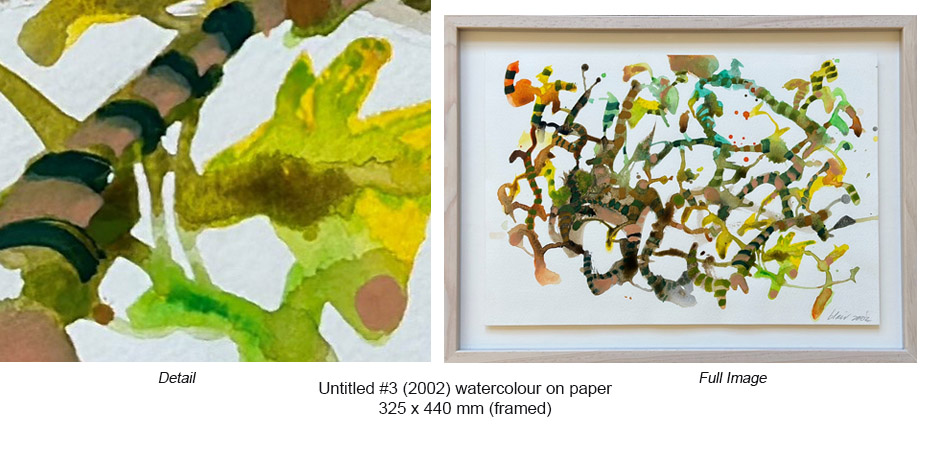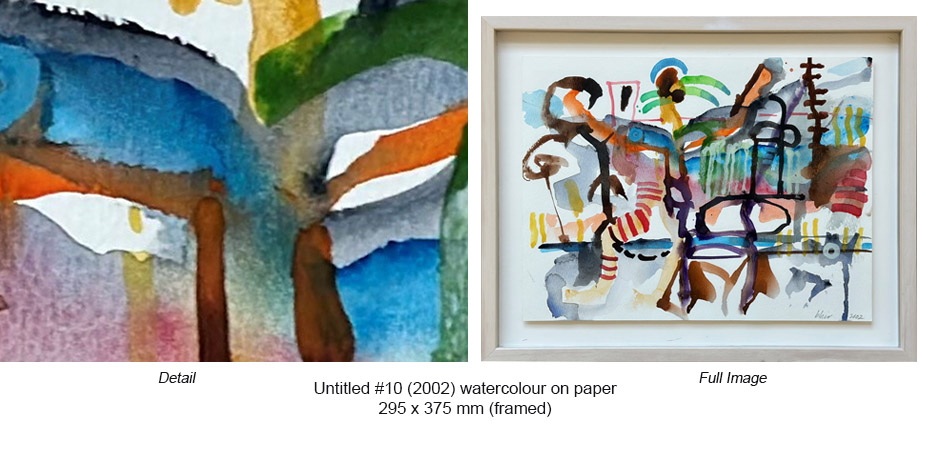Born in Christchurch in 1945, Philippa Blair graduated with a Diploma in Fine Arts from Canterbury University in 1967. She has taught and exhibited internationally for over 40 years and has more than 100 solo and 300 group exhibitions to her credit. Represented in numerous public and private collections in Japan, France, Italy, Germany, Malaysia, Australia, New Zealand, and the United States, she has works in The British Museum (London), Chan Lui Museum (Taiwan), The National Art Gallery (Canberra), Museum of New Zealand Te Papa Tongarewa, Auckland Art Gallery, Christchurch Art Gallery, as well as many corporate collections in the United States including Citicorp, Citibank, General Electric, and Hong Kong and Shanghai Banks.
Geographical consciousness plays an important role in Blair’s painting. Her vibrant works fuse influences from her NZ heritage with the frenetic pace of the many cities in which she has lived and worked. Abstracted maps sit alongside architectural elements (“architecture is in my genes”), music scores and cell structures – vivid elements of her vocabulary reflecting other important influences – ballet and dance (her first passion), and memories of a microbiologist father, Dr Ian Blair (a professor at Lincoln College, Canterbury) and a musician mother, Grace McKenzie, a professional soprano and pianist. Her mother was also an artist and studied at the Canterbury Art School at the same time as Rita Angus.
Blair spent her childhood at Lincoln on the Canterbury Plains, studying piano from the age of 6 and riding and caring for her horses – something she credits with giving her courage and a love of the natural world. She was very close to her father and was often allowed to act as an assistant in the laboratory, introducing her to the exciting world of discovery. Dr Blair was a scientist, a trout fisherman and a writer. His influential textbook on plant and human diseases, “Micro-organisms and Human Affairs” (1948) has been a long-term source of inspiration for Blair, as has her father’s concern for the environment. (Dr Blair was a trustee of the National Library of New Zealand; he served on the National Water Pollution Committee; was appointed a Guardian of Lake Wanaka and co-edited a book on the resources of the lake. He also served on the Royal Commission into Nuclear Power Generation in 1976-77, and in retirement was actively involved with the Queen Elizabeth II National Trust.)
Blair’s influences are also evident in her process. “When I begin, I improvise, like you would in jazz music.” Starting with paper and ink drawings, she structures visual rhythms and articulates space. “But I don’t make the paintings from the drawings – I try to create an atmosphere where I am confident enough to work direct and be brave enough to make changes as I go.” The process of drawing is integral to her artistic practice, not only in the initial working stages but also as compositional elements within her paintings. Drawing becomes part of the collective elements which contribute to the layered and sculptural qualities of her paintings, creating a 2D/3D conversation.







